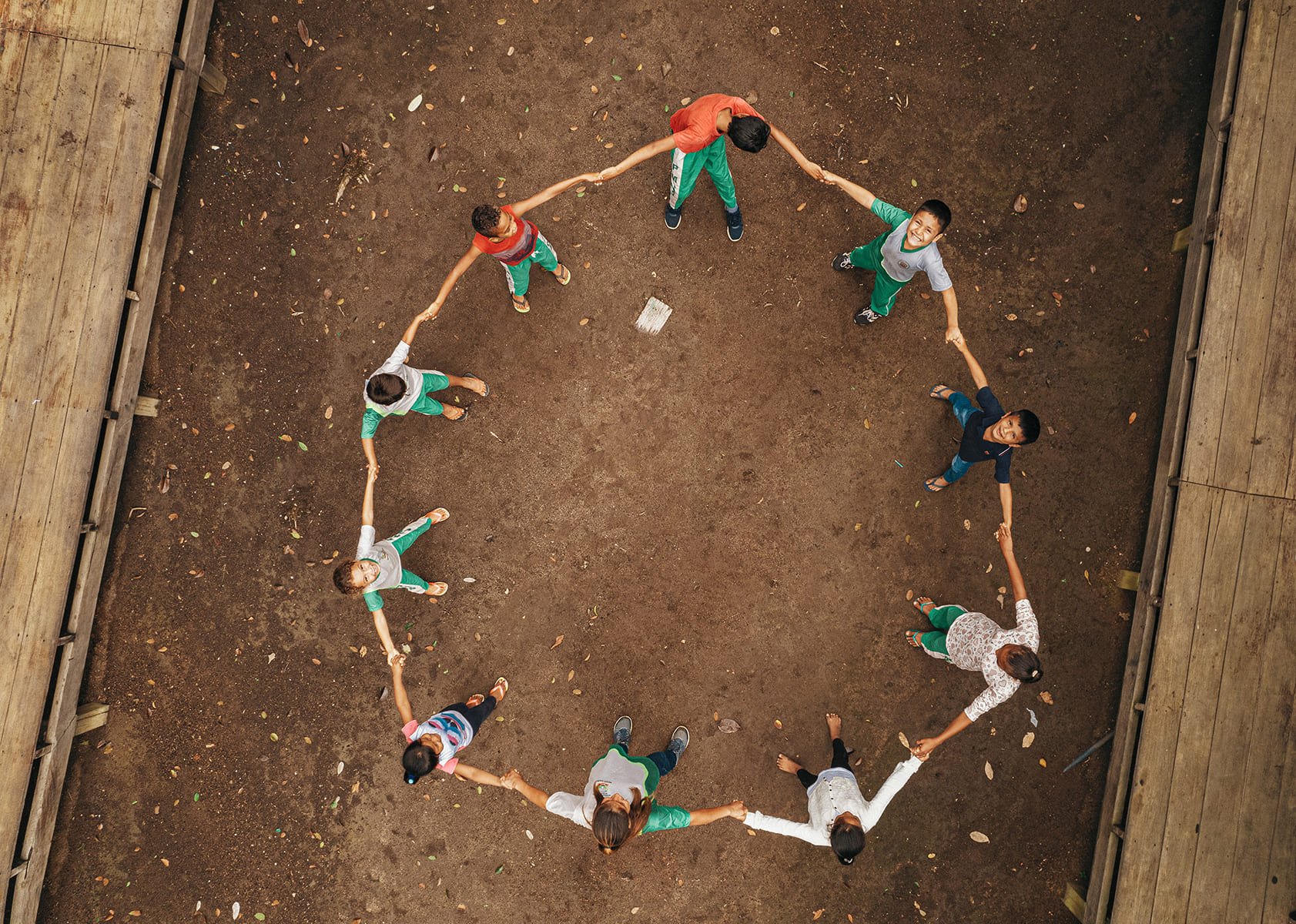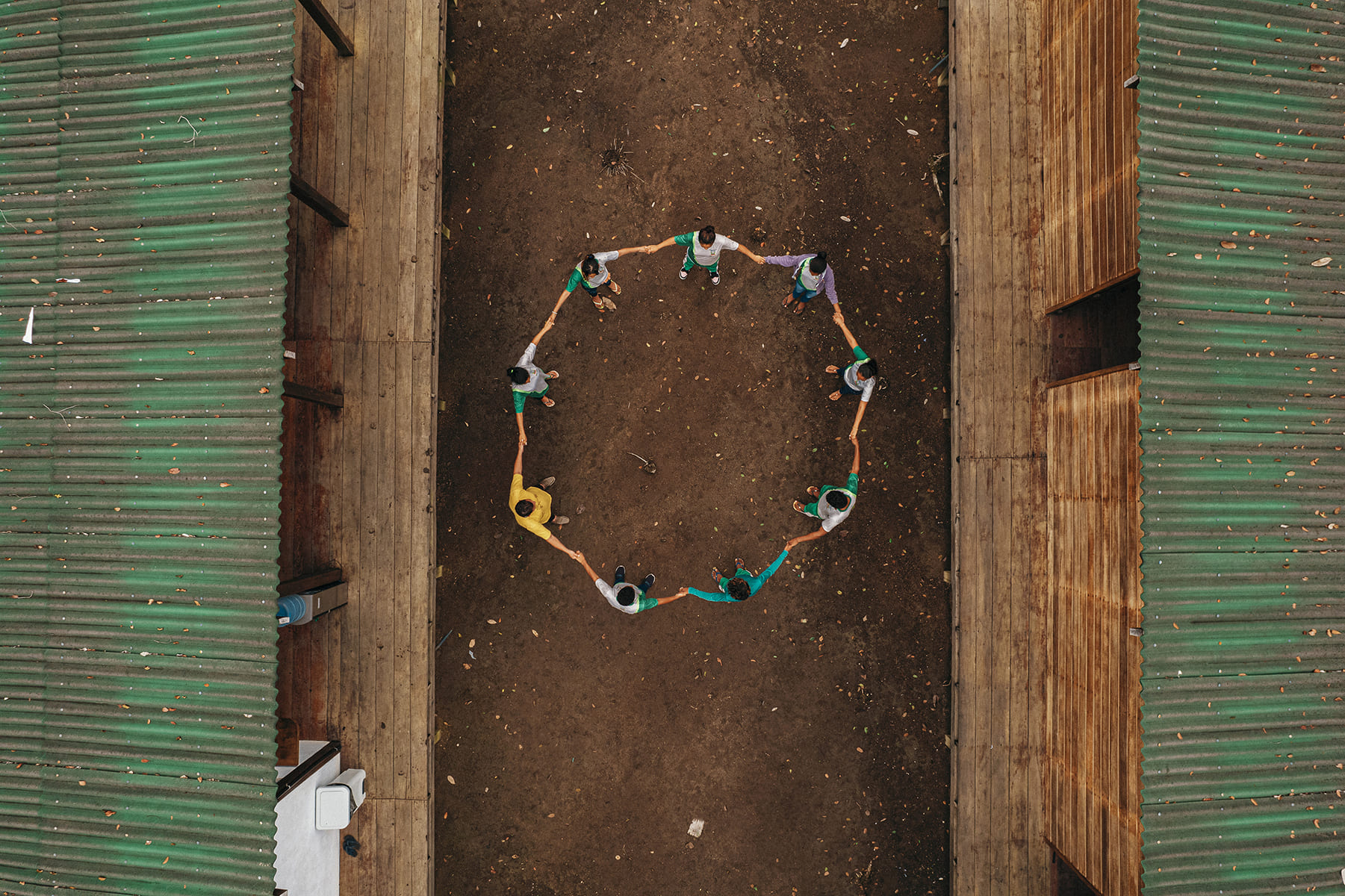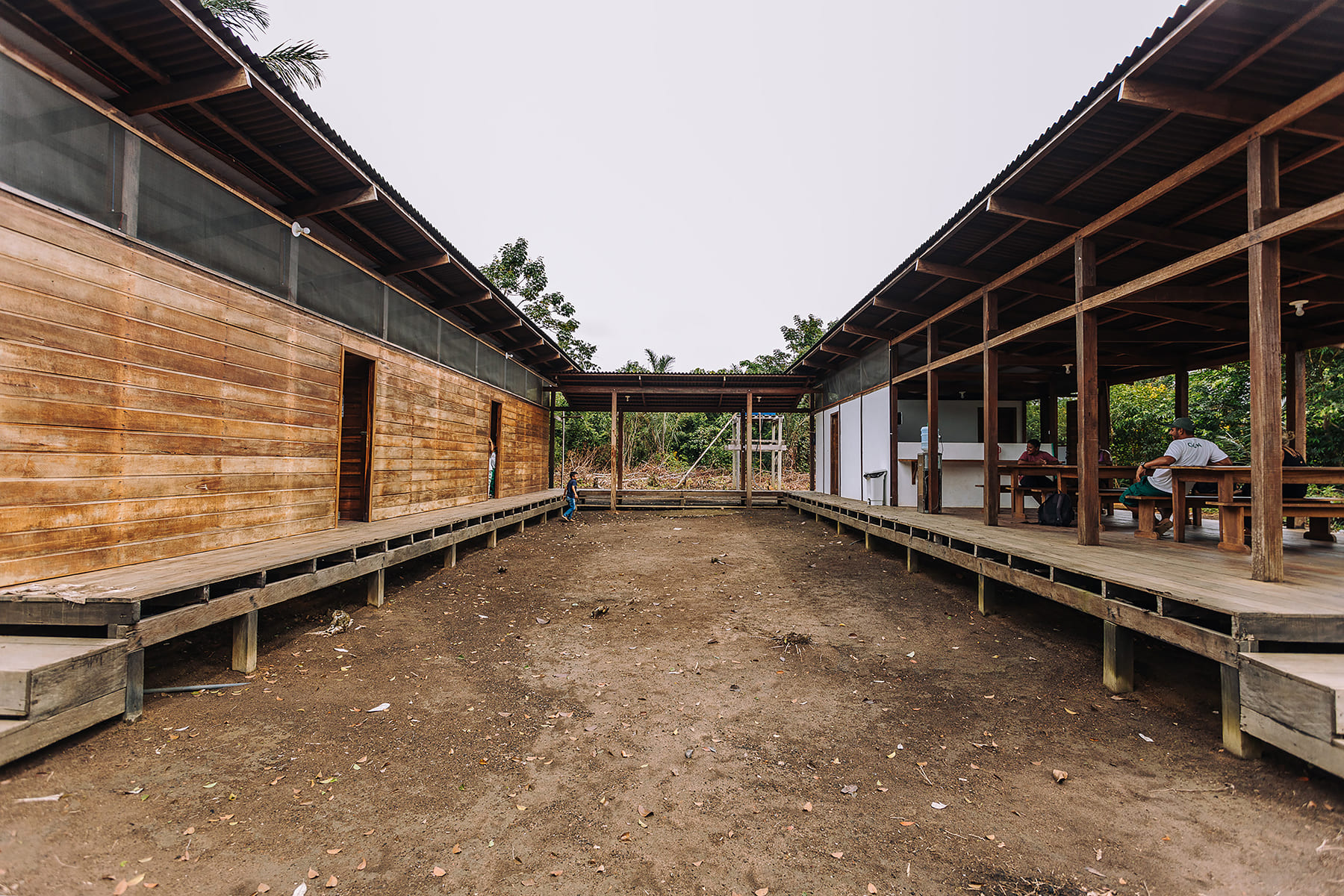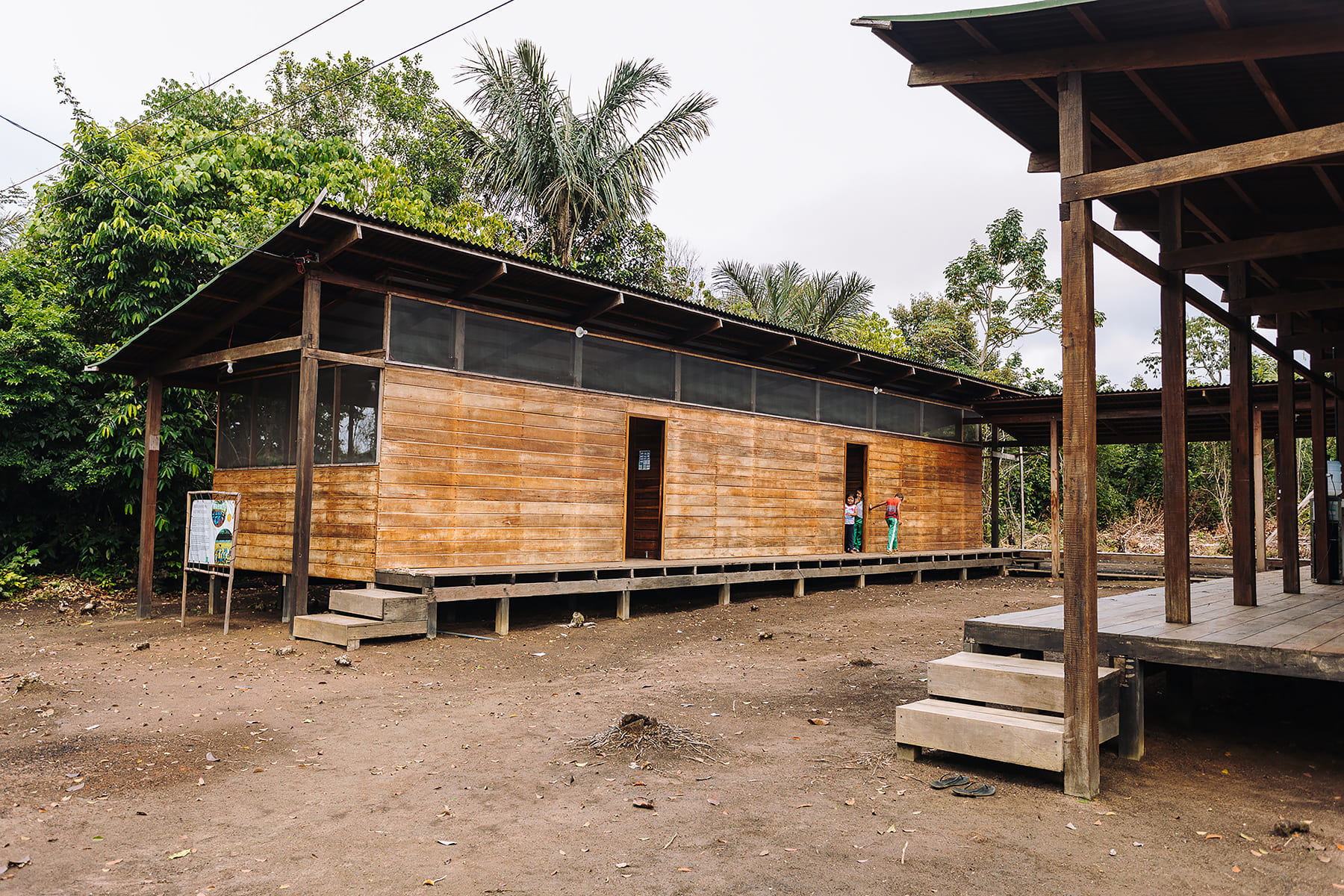Equipe: Pablo Alvarenga, Adriana Zampieri, Daniel Semião, Beatriz Souza
Fotografia: Felipe Castellari
Projeto elaborado a partir dos desenhos dos alunos e professores, com o apoio do Anavilhanas Jungle Lodge. O pátio central foi pensado como espaço de convívio, além de facilitar a entrada de luz e ventilação natural para a construção.
Escola Aracari is the result of a collaborative process among AMZ, Instituto Anavilhanas and the riverside community of Aracari to build a school in the Amazon Rainforest. The project aims to empower the residents, without dismissing their knowledge or changing their connection to the place they live in. The drawings were thought as guidelines for the building, which was made by the community itself.
The project of a “model” school, that could be replicated later on in other similar riverside communities had the main challenge of being a viable and low impact construction. The limitations of labor resources and material availability were taken into high account. As the building site was only reachable by boat, the size and weight of each element, together with the sustainable management of local resources, were thoughtfully considered.
Drawings from the kids and teachers were the starting point of the concept, which highlighted a central courtyard as a space of interaction. Three classrooms, kitchen and cafeteria surround the courtyard and make up the original program of the school, while lightweight claddings allow these rooms to be reorganized as needed.
The modular conception of the U-shaped construction makes it possible for the school to grow according to necessity. Natural light and ventilation were other key aspects considering the lack of electricity and high temperatures during the year. To preserve those, big eaves were designed to protect against the rains while openings with mosquito nets maintain light and cross ventilation throughout the school.
Wood columns, scissors trusses and metal roofing are the main components of the building. They are not only known to the builders but also an easy system to adapt. This easy approach to the construction system is the result of concern for the local manual labor and preexisting conditions of the site.



